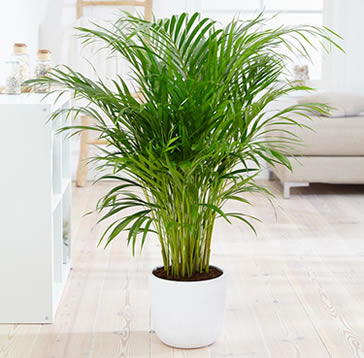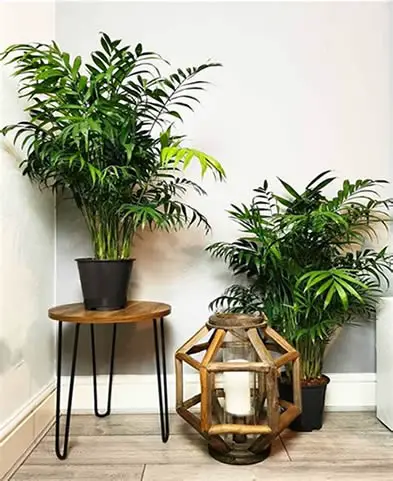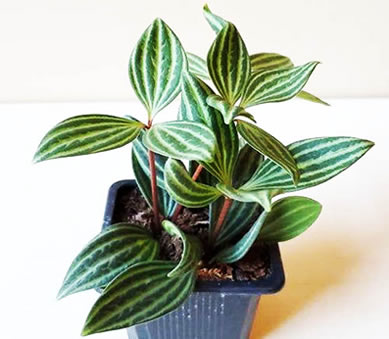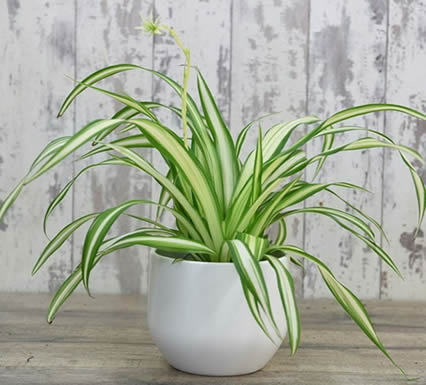10 Gorgeous Houseplants That Are Totally Safe for Pets

You shouldn’t have to choose between a beautiful home and a safe one. Fortunately, there’s a wide selection of pet-safe plants that are just as stunning as their toxic counterparts — without putting your furry friends at risk.
These non-toxic houseplants bring color, shape, and vibrancy into your space while doubling as calming visual elements and even natural air purifiers. Whether you’re decorating a sunlit shelf, brightening up a bathroom, or creating a mini jungle in your living room, these picks let you do it all with peace of mind.
Here are 10 of the most beautiful, dog and cat friendly greenery options — organized alphabetically for easy reference.
Table of Contents
- 1. Areca Palm (Dypsis lutescens)
- 2. Baby’s Tears (Soleirolia soleirolii)
- 3. Banana Plant (Musa spp.)
- 4. Bamboo Palm (Chamaedorea seifrizii)
- 5. Calathea (Calathea spp.)
- 6. Friendship Plant (Pilea involucrata)
- 7. Parlor Palm (Chamaedorea elegans)
- 8. Peperomia (Peperomia spp.)
- 9. Polka Dot Plant (Hypoestes phyllostachya)
- 10. Spider Plant (Chlorophytum comosum)
- Final Word
1. Areca Palm (Dypsis lutescens)

💡 Light: Bright, indirect
💧 Water: When top inch of soil is dry
🌫️ Humidity: Moderate to high
🐾 Pet-Friendly: Yes
Looks: Elegant, golden-green fronds that sway gently in the breeze. Soft, tropical, and full of movement.
Why It Works: Areca Palms are tall enough to make a statement in any living room corner, hallway, or entryway.
Their graceful silhouette and air-purifying abilities make them a calming focal point — perfect for peaceful, pet-friendly zones with plenty of natural light.
Care: Low-maintenance and great for pet-filled homes.
Loves indirect light and consistent moisture.
Avoid cold drafts and never let the soil fully dry out.
Care: Great for humid rooms like kitchens or bathrooms. Needs frequent watering to avoid drying out. Prefers shallow pots and soft lighting.
For a more detailed care guide see Areca Palm Care: Growing a Lush, Tropical Statement Plant.
2. Baby’s Tears (Soleirolia soleirolii)

💡 Light: Bright, indirect
💧 Water: Keep consistently moist
🌫️ Humidity: High
🐾 Pet-Friendly: Yes
Looks: Dense mats of tiny, round green leaves that spill like lace over the sides of pots.
Why It Works: This delicate trailing plant looks magical in hanging baskets or perched on shelves.
It softens the hard lines of a room and brings a whimsical, storybook feel to kitchens, bathrooms, or reading nooks.
Loves steamy, warm areas and makes a charming windowsill companion.
Care: Great for humid rooms like kitchens or bathrooms.
Needs frequent watering to avoid drying out.
Prefers shallow pots and soft lighting.
For a more detailed care guide see Baby’s Tears Care: How To Grow This Soft Groundcover Indoors or Out.
3. Banana Plant (Musa spp.)

💡 Light: Bright, direct or strong indirect
💧 Water: Keep soil moist
🌫️ Humidity: High
🐾 Pet-Friendly: Yes
Looks: Bold, oversized leaves in lush green. Full of tropical energy and movement.
Why It Works: With its large, expressive leaves, the Banana Plant brings exotic vacation vibes to any sun-drenched corner.
It’s perfect for bright living rooms or kitchens with large windows.
It can also help increase humidity in dry homes — great for both plants and pets.
Care: Needs light and warmth.
Water often and mist regularly to support rapid growth.
Feed monthly during growing season.
For a more detailed care guide see Banana Plant Care: How To Grow These Bold Tropical Beauties Indoors or Out.
4. Bamboo Palm (Chamaedorea seifrizii)

💡 Light: Medium to bright, indirect
💧 Water: When top inch dries
🌫️ Humidity: Moderate
🐾 Pet-Friendly: Yes
Looks: Graceful, upright stems with delicate fronds. Sleek and architectural.
Why It Works: The Bamboo Palm offers a tidy, vertical look that works beautifully in minimalist or modern spaces.
It thrives in indirect light, making it a favorite for hallways or bedrooms with filtered sun.
It also acts as a natural air purifier — ideal for stuffy, closed-off rooms.
Care: Easy-going and adaptive. Let soil dry slightly between waterings.
Keep away from direct sunlight to avoid leaf burn.
For a more detailed care guide see Bamboo Palm Care: The Air-Purifying Palm That Thrives Indoors.
5. Calathea (Calathea spp.)

💡 Light: Low to medium, indirect
💧 Water: Keep soil moist
🌫️ Humidity: High
🐾 Pet-Friendly: Yes
Looks: Vividly patterned leaves with purples, greens, and whites that move with the light.
Why It Works: A true showstopper on any table, desk, or sideboard. Calatheas bring life and drama to low-light areas, like shaded living rooms or home offices.
They’re great for spaces that need a visual centerpiece without risking exposure to direct sun.
Care: Sensitive to dry air and chemicals in tap water.
Use filtered water and mist daily to maintain leaf health and color vibrancy.
For a more detailed care guide see Calathea Care: How To Keep Your Prayer Plant Thriving Indoors.
6. Friendship Plant (Pilea involucrata)

💡 Light: Low to medium, indirect
💧 Water: Keep soil slightly moist
🌫️ Humidity: High
🐾 Pet-Friendly: Yes
Looks: Crinkled, textured leaves in bronze and green tones. Small and full of character.
Why It Works: Compact enough to live on shelves, desks, or kitchen counters, the Friendship Plant adds depth and richness to any décor.
It’s ideal for terrariums or smaller plant groupings and adds a touch of softness wherever space is tight.
Care: Perfect for small pots and terrariums.
Likes humidity and warmth.
Keep the soil moist but not soggy.
For a more detailed care guide see Friendship Plant Care: How To Grow This Soft, Fuzzy Beauty Indoors.
7. Parlor Palm (Chamaedorea elegans)

💡 Light: Low to medium, indirect
💧 Water: When soil dries halfway
🌫️ Humidity: Moderate
🐾 Pet-Friendly: Yes
Looks: Feathery green fronds that arch gracefully. Classic, calming, and versatile.
Why It Works: The Parlor Palm is a go-to for bedrooms, lounges, and apartment corners. Its timeless look works with any style — from vintage to contemporary.
Plus, it requires little light and thrives even in dry indoor air.
Care: Ideal for beginners.
Doesn’t need direct sun or high humidity.
Water when top half of soil is dry and keep away from cold air.
For a more detailed care guide see Parlour Palm Care: How to Grow the Elegant, Low-Light Chamaedorea Elegans.
8. Peperomia (Peperomia spp.)

💡 Light: Medium to bright, indirect
💧 Water: Let soil dry slightly between waterings
🌫️ Humidity: Moderate
🐾 Pet-Friendly: Yes
Looks: Glossy, textured leaves that range from round to rippled, with green, silver, or red hues.
Why It Works: Peperomia is perfect for decorative pots on coffee tables, plant stands, or open shelving.
Its tidy growth habit and variety of leaf styles let you play with texture without needing constant care.
Ideal for compact city homes or small studios.
Care: Great for desks and shelves.
Likes regular but light watering.
Avoid letting it sit in water — prefers to dry slightly between drinks.
For a more detailed care guide see Peperomia Plant Care. Beginner Guide & Expert Tips.
9. Polka Dot Plant (Hypoestes phyllostachya)

💡 Light: Bright, indirect
💧 Water: Keep soil lightly moist
🌫️ Humidity: Moderate
🐾 Pet-Friendly: Yes
Looks: Color-splashed leaves in pink, white, or red over green. Youthful and expressive.
Why It Works: This plant makes a playful accent on windowsills, bookshelves, or kids’ rooms.
Its splashy colors bring contrast to green-heavy collections.
It also thrives in bright kitchens and makes a perfect match for cheerful interiors.
Care: Trim often to avoid legginess.
Needs frequent watering and bright, indirect light to keep its colors vibrant.
Great for grouped plant displays.
For a more detailed care guide see Polka Dot Plant Care That Keeps the Color Popping.
10. Spider Plant (Chlorophytum comosum)

💡 Light: Low to bright, indirect
💧 Water: When top inch of soil is dry
🌫️ Humidity: Moderate
🐾 Pet-Friendly: Yes
Looks: Arching green leaves with white stripes and dangling plantlets that resemble spiders.
Why It Works: The Spider Plant is a champion of versatility.
Great for hanging near kitchen windows, brightening up bathrooms, or even sitting on top of cabinets.
It’s also known for cleaning the air — ideal for homes with limited ventilation.
Care: Easy to propagate and quick to bounce back if neglected.
Water when top inch is dry and trim off brown tips for a clean look.
For a more detailed care guide see Spider Plant Care: How to Grow a Happy, Trailing Houseplant.
Final Word
Creating a pet-friendly plant setup doesn’t mean settling for dull or basic greenery.
Each of these non-toxic houseplants brings something special — whether it’s color, texture, movement, or function. And best of all, they offer peace of mind.
From towering palms to delicate trailing vines, you can design a lush indoor space that supports both your style and your pets’ safety.
These plants won’t just survive — they’ll help your home feel more vibrant, more relaxed, and more alive.
Thanks for reading! I'm Michael — houseplant fanatic and your Pinterest plant guide.
Follow me on Pinterest for fresh updates 🌿



